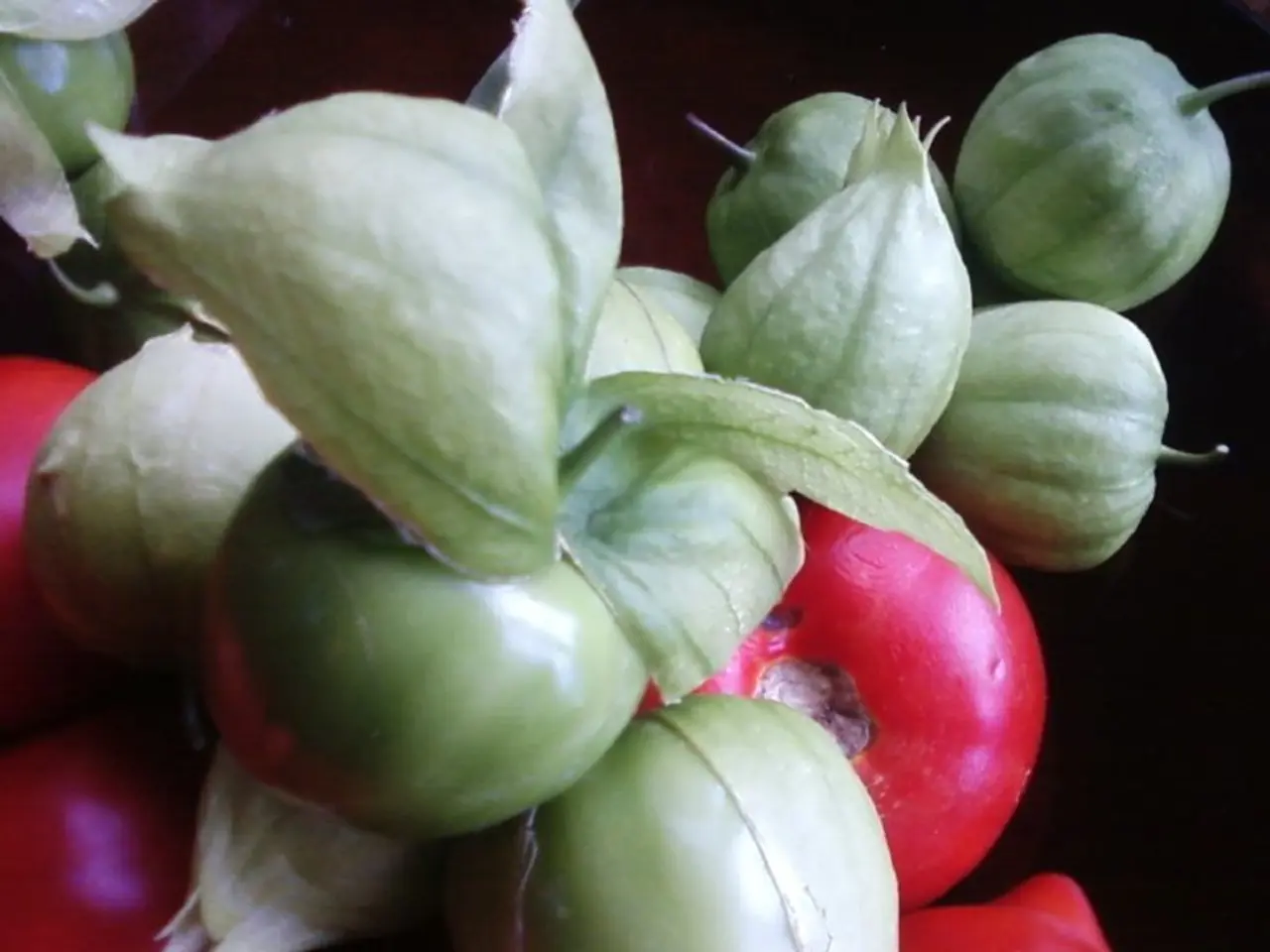Growing and Consuming Nutritious Vegetables at Home
In the heart of cities, growing your own vegetables and herbs is not just a dream but a reality. With the right knowledge and resources, you can transform a small garden or balcony into a thriving oasis.
Heavy feeders like cabbage and potatoes require manure, available in granular form made from composted cattle manure. This compost, which contains no additional fertilizer, should always be kept moist. On the other hand, onions are cultivated from store-bought onion sets and require no special care.
Carrots, spinach, parsnips, and leeks are sown in rows, while radishes can be planted after working hornspines, an organic long-term fertilizer, into the soil. For those unsure about the quality of their garden soil, an analysis can be done at city institutes. Improvements can be made with natural means such as well-rotted compost.
Seed tapes are available for radishes, where the seeds are in the correct distance between thin fleece that dissolves after a short time. Sand is used to loosen the soil, making it easier for roots to grow.
In Germany, municipal environmental offices, consumer advice centres, and agricultural consulting offices often offer soil analysis services to ensure the garden soil is suitable for growing vegetables and herbs. Universities with agricultural departments and some private laboratories may also provide soil testing.
Pumpkins can be grown in an ideal high bed with a surface area of at least one square meter. Chives, parsley, basil, and cress can be sown in pots filled with seed-raising compost.
Lettuce can be planted under a plastic tunnel in March, while tomatoes can be pre-grown from seeds or bought as ready-made young plants. Tomatoes can be cultivated in pots or buckets on a balcony or terrace, in a small plastic greenhouse. Regular watering and occasional doses of hornspines will help tomatoes grow juicy and aromatic.
To enrich the soil with valuable minerals and trace elements, rock dust can be used. Dolomitic lime activates the soil life and eliminates soil fatigue, ensuring a healthy environment for your plants to grow.
Natural pest control methods include thin nets against pigeon damage and the egg-laying of the cabbage white butterfly. Manually relocating caterpillars and slugs can also help keep pests at bay.
With these tips and resources, you're well on your way to growing a bountiful harvest of fresh, organic vegetables and herbs right in your urban garden. Happy gardening!
Read also:
- Understanding Hemorrhagic Gastroenteritis: Key Facts
- Stopping Osteoporosis Treatment: Timeline Considerations
- Tobacco industry's suggested changes on a legislative modification are disregarded by health journalists
- Expanded Community Health Involvement by CK Birla Hospitals, Jaipur, Maintained Through Consistent Outreach Programs Across Rajasthan








